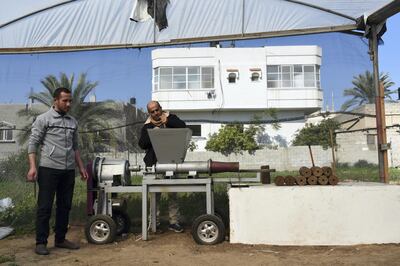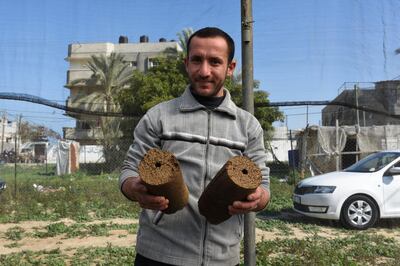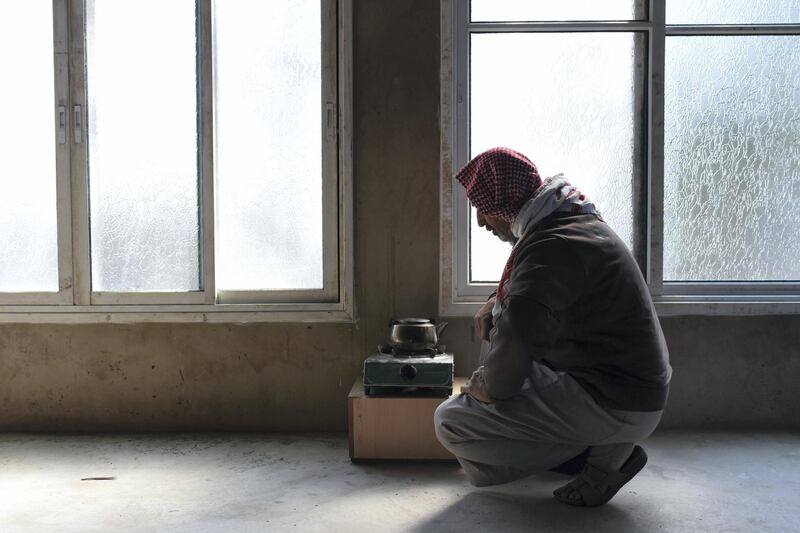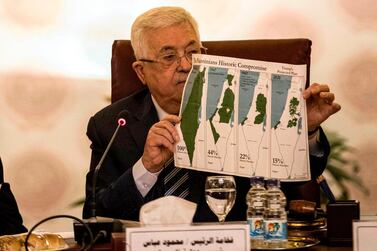A bleak United Nations forecast painted Gaza as a place that would become unliveable by 2020, but Palestinians are getting to grips with severe shortages by creating their own energy supplies.
Nearly eight years after sounding the alarm, the UN says the majority of Gazans remain “locked-in” by the Israeli blockade while humanitarian funding has hit a record low for the decade.
Small-scale innovations are easing the pressure, however, such as one blue contraption found on a farm not far from the border with Israel.
Next to greenhouses filled with tomatoes, Murwan Abu Mharib explains how his machine captures gas emitted from manure, which he places in the lower part of the contraption.
The supply does not meet all of his family’s needs, but it saves money and helps them cope when the supply of cooking gas from Egypt or Israel is disrupted.
“It’s good for my home. It helps us a lot,” says the 50-year-old farmer, who steps inside to place a kettle on a stove which is fuelled by the biogas.
The project is one of many funded by the International Committee of the Red Cross in the absence of long-term solutions to resolve the energy crisis.

Last month, Gaza’s two million residents had just 11 hours of electricity per day, according to UN data, an improvement on previous years but still falling far short of meeting demand. At times, the territory has had just four hours of electricity a day, or none at all.
Foreign donors are providing solar panels and generators to hospitals, but such measures are merely keeping the most essential services running.
“They help to respond to the acute needs, but the problem of energy can only be solved by a collective response from the authorities,” says Suhair Zakkout, an ICRC spokeswoman in Gaza.
The Palestinian leadership stands divided, however, following a split between Gaza rulers Hamas and the West Bank-based Palestinian Authority that goes all the way back to elections held in 2006.
Gulf state Qatar has stepped in, providing millions of dollars which has in part been used for fuel and electricity. But there is no sign Israel is willing to end its blockade on the enclave, imposed in 2007 due to security concerns when Hamas took control of the strip. The lifting of the blockade is seen as key to improving life in Gaza.
Cogat, the agency that dictates Israeli policy in the Palestinian territories, says it “works at advancing many civil projects” in Gaza.
"Israel provides 120 megawatts of electricity through 10 power lines, funded by the Palestinian Authority," Cogat said in a statement to The National.
Figures from the UN agency for humanitarian affairs (OCHA) show 119 megawatts reached Gaza through the Israeli lines last month, plus 83 megawatts from the territory’s own power plant.

But that left a gap of 349 megawatts needed to meet demand, prompting many Gazans to use batteries instead.
Chinese-made batteries can be used to power lights or an internet router, says Alaa Thabet, a salesman in his twenties. Leaning on the counter of an appliances shop in Gaza City, he says they face no problems importing them.
“It’s not expensive, that’s why everyone has this kind of battery,” says Mr Thabet, adding that the price depends on its strength.
Beyond batteries, some Gazans are seeking alternative power supplies closer to home.
In the southern city of Khan Yunis, Mohammad El Gha and his business partner Yasser El Ghawaji are giving a demonstration on how to turn olive peel into energy.
A byproduct from the autumn olive harvest, the peel is fed through a metal machine and compressed to form circular blocks. These can be used domestically instead of cooking gas, although the largest share of the bricks are currently sold to heat poultry farms.
After receiving an ICRC grant, the scheme got underway in October and is already profit-making, the team says, although it faces one significant hurdle.
“This machine doesn’t work without power. So when the power is cut, we can’t work,” says Mr Gha, 31, who focuses on drying and selling the bricks when there’s no electricity.
Olivier Dubois, who heads the energy programme at the UN’s Food and Agriculture Organisation, says bioenergy can help communities by creating a business chain.
Farmers “can also produce their own bioenergy and make some money from selling this,” he says. “You also have the processing. You create a local economy around bioenergy which is less the case in solar.”
But solar energy seems an obvious choice in the eastern Mediterranean, although the initial costs are usually prohibitative for Gaza residents.
Majd Mashharawi, a 26-year-old entrepreneur, is trying to overcome this problem by selling subsidised solar kits to families which they can install themselves.
SunBox was launched in September 2018 as a social enterprise, using profits from commercial contracts in Gaza to offer solar kits to families at a discount of up to 50 per cent.
The solar kits can only be used to power appliances, similarly to the batteries, but Ms Mashharawi is convinced young people can solve Gaza’s energy crisis.
“For me, if someone can fix the situation, it will be us. Not the government, politics, the organisations,” she says, while warning it will take time.
“In 20, 30 years, the situation can be solved. As long as we have people who are committed to the vision.”







